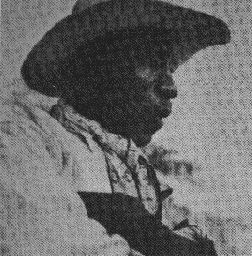

When a loa possesses a person, for the length of time that the loa controls the body, the actions and attitudes expressed are those of the loa and not of the person possessed. Young people possessed by an old loa may seem frail and decrepit, while the old possessed by a young loa may dance and cavort with no thought to their disabilities. Even facial expressions change to resemble the loa. That is why when a male loa possesses a female devotee, the pronoun he is used to describe the devotee, and vice versa. A possessed devotee is called a cheval or horse; when a loa takes possession, he "mounts" the devotee.
There are many reasons why a loa may choose to possess a devotee. He could be protecting the devotee from danger or conferring a special power to allow the devotee to accomplish a difficult task successfully, such as permitting the devotee to remove himself or herself from a situation with supernatural speed. The loa may take possession to cure an illness or prevent suffering. Loa use their chevals to give advice, prescribe a remedy for a problem or treat an ailment. They also use chevals to point out a forbidden ritual, to give warnings of danger or to punish. Finally, they take possession to preside over a vodoun ceremony or to receive a sacrificial offering.
When a person is possessed, the loa enters the person as if with a blow at the nape of the neck or in the legs. The person being mounted struggles against the loa at first, staggering around in circles and throwing out his or her arms. The body shakes, the muscles are flexed, and there are often spasms in the spine. Hounsis nearest to the person being possessed take charge of him or her, guarding against injury and removing the shoes. Suddenly, the cheval stops fighting and the loa takes full possession, manifesting the characteristics peculiar to him or her.
The houngan or mambo can look at a mounted devotee and say which loa possesses him or her. They act as an intermediary to summon the loa and help the loa depart when their business is finished. A loa who is mounting a devotee is also required to salute the houngan before going about his business. Chevals exhibit the characteristics of the possessing loa, often dressing in strange clothing or cross-dressing. They also smoke, drink alcohol and eat, partaking of physical pleasures that the loa cannot normally access. While possessed, a cheval often speaks in ancient tongues. He or she can feel no pain, and can, for instance, walk on fire or eat it. The cheval also exhibits great strength and energy while possessed, followed by exhaustion when the loa leaves.

When the loa leaves the cheval, the cheval immediately drops any objects he or she is holding and slumps to the ground. After possession, the devotee falls into a state characterized by complete indifference to the loa's actions during the possession. He or she is physically exhausted by the loa's presence inside of them. They usually cannot remember what they said or did while being possessed, and so cannot be held accountable for their actions while the loa controlled them.

Copyright 1995 Shannon Turlington Settle disclaimer
Last revised
9/27/95


